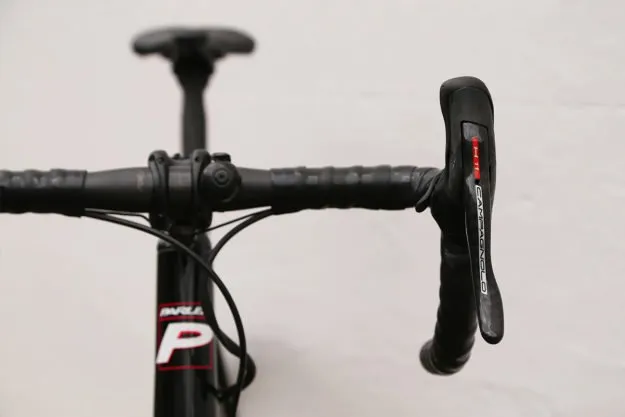
La Vida Rotor
Published:
Updated:
May 27, 2018
July 16, 2024
For Campagnolo, 2017 was a big year. They launched a range of products to the market which many speculated whether the company would even attempt so soon in their new ‘H11’ road disc range. But how would it stack up against Shimano and SRAM — both of whom already had years of experience with disc brakes?
On the back of the Record EPS groupset review we posted in September 2017, Campagnolo sent us the relevant parts to convert that groupset to an H11 road disc group and hang on a review frame so that we could answer that question for ourselves. As the functionality and performance of the EPS elements of the groupset are unchanged from the previous review, this article will focus on the disc-specific H11 components.
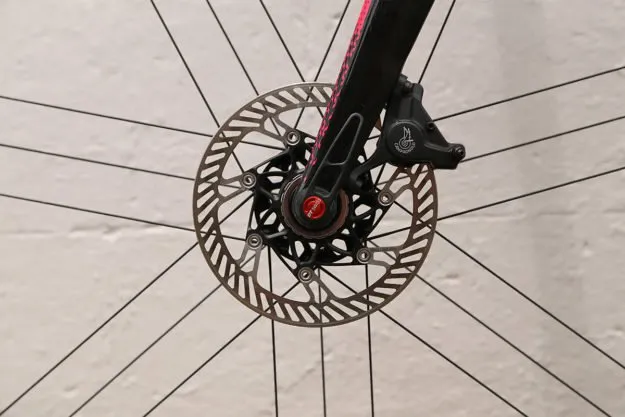
I came to this H11 groupset not long after having installed the eTap HRD groupset on another review bike. The most immediate difference with Campagnolo is that they supply the system ‘dry’ — by which I mean without any brake fluid pre-filled.
Whilst this makes the overall installation process slightly longer on account of it being essential to fill and bleed the system (which wasn’t necessary with eTap HRD even despite trimming the hose length), it does make for a cleaner and less delicate install.
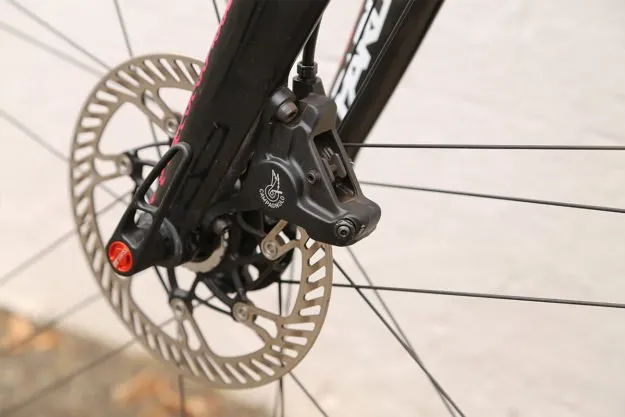
Campagnolo have clearly thought through the installation process as much as they have the system itself. Each hydraulic hose came pre-installed with a neat end cap that enabled a traditional gear cable to be installed into it.
This helped with threading through the internal routing on the bike in question — a godsend when trying to feed a hydraulic hose through a chain stay to a hole that is only a fraction larger than the hose itself.

Mounted up and hose lengths trimmed, the bleeding process began. As always with disc brake bleeding, this is much less daunting than it seems and takes as long to setup as it does to carry out; and is essentially a repeated to-and-fro syringe squeezing process to remove bubbles from the system.
If you don’t install the disc brake system yourself I would strongly advise doing this when it is required to learn how it is done, as it is probably the most important maintenance job aside from disc and pad replacement.
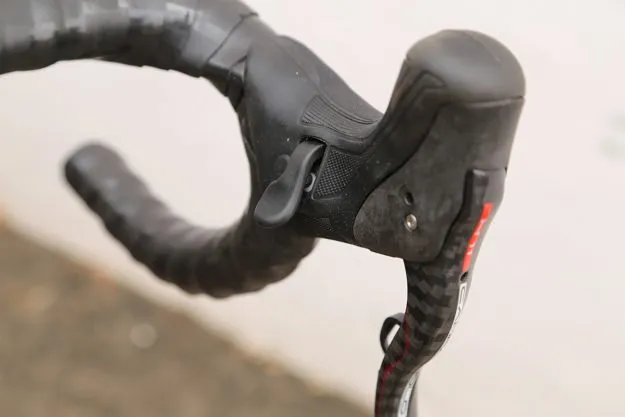
The calipers themselves are a collaboration with long-time disc brake specialists, Magura. They are very neatly thought out, being a flat mount design which does not require adaptors to mount at the front or the rear.
This differs from both Shimano and SRAM’s flat mount approaches and is a welcome change. However, it does mean you need to be clear on your needs at the time of purchase as you have to buy calipers which are specific to 140mm or 160mm disc rotors — you are not able to change between rotor sizes like you can with the other brands.
The calipers are finished in black to match the carbon on the rest of the groupset; and this also happens to help the white Campagnolo crest stand out nice and clearly.
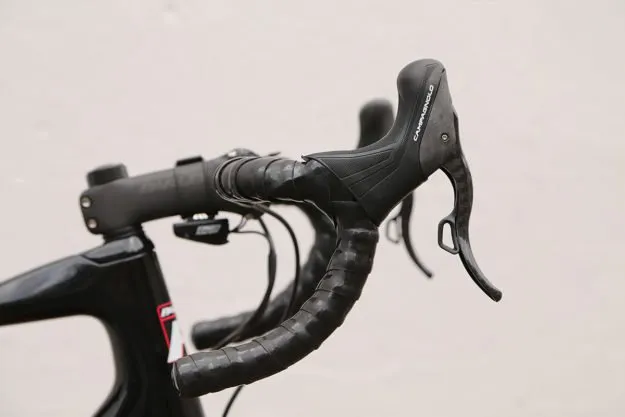
The disc rotors themselves are of a now familiar ‘floating rotor’ design, with a stylised aluminium carrier holding the steel brake disc. This is a popular setup as the aluminium helps dissipate heat from the steel braking surface. The disc is mounted to the wheel via a centerlock mount — a system which is fast becoming the go-to standard for disc road rotors and wheels.
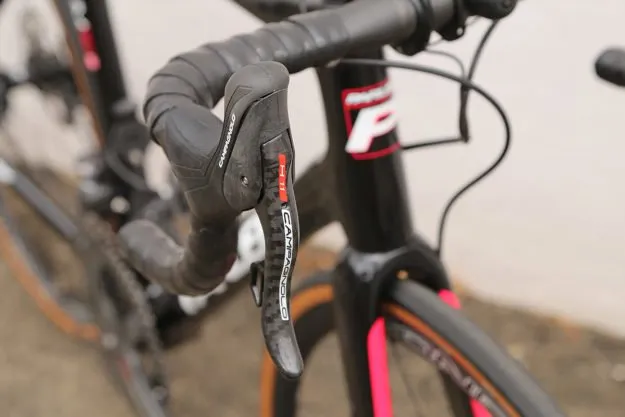
With regard to the controls, Campagnolo have been very successful with in their disc brake implementation. Side-by-side, the overall shape has stayed true to the rim brake lever and Campagnolo have managed to restrict the growth in the highest point of the lever body to only 8mm more than the rim brake version — a notable success given that is where the hydraulics have been squeezed in.
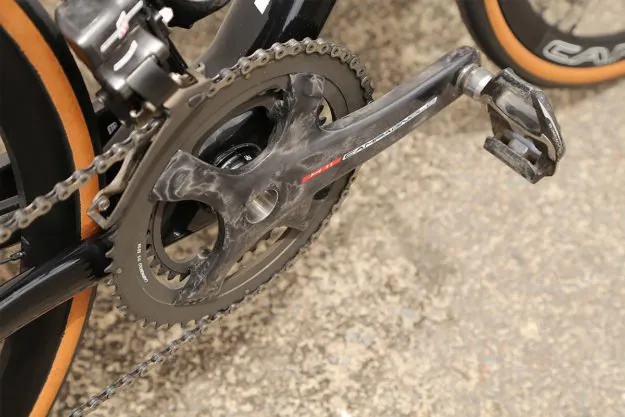
That said, whilst I initially liked the shape, I found that the feel in the hand is somehow quite different from the rim brake levers. For me (and I emphasise that this is down to personal preference) this slight difference was enough to mean they have fewer comfortable hand positions than the rim brake equivalent. For those with smaller hands, the lever reach can be adjusted, making the system suitable for any user.
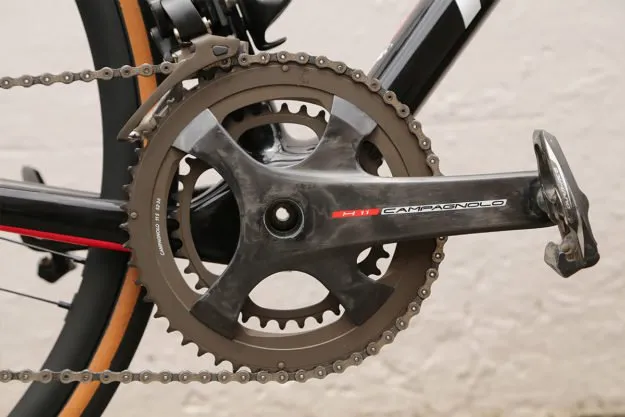
In a move that was met with mixed opinion, the H11 range is spec’d with a specific chainset. This is not groupset-specific, so it does not exist in the traditional Chorus, Record and Super Record denominations on the carbon side — although there is an aluminium version for the Potenza version of the H11 range.
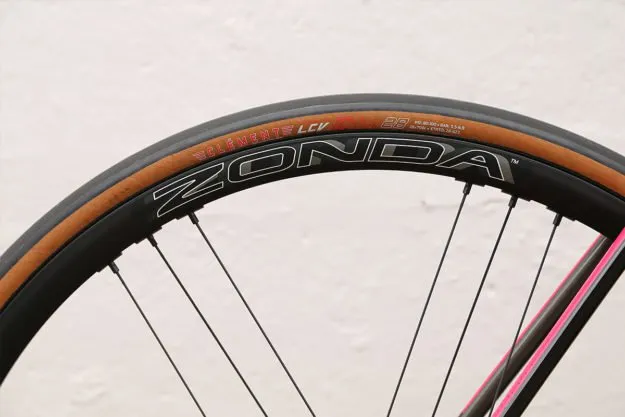
The design matches the newer 4-arm Campagnolo design and utilises the same chainrings, but the chainrings are offset on the H11 chainsets to enable a better chainline on the wider spaced rear end of a disc brake setup. The Q-factor of the chainset is unchanged despite this.
Perhaps worth noting is that this doesn’t mean no other chainsets will work with H11 — just that the chainline will be better with an H11 chainset, and your drivetrain will probably be marginally quieter and slightly more slick in shifting as a consequence.
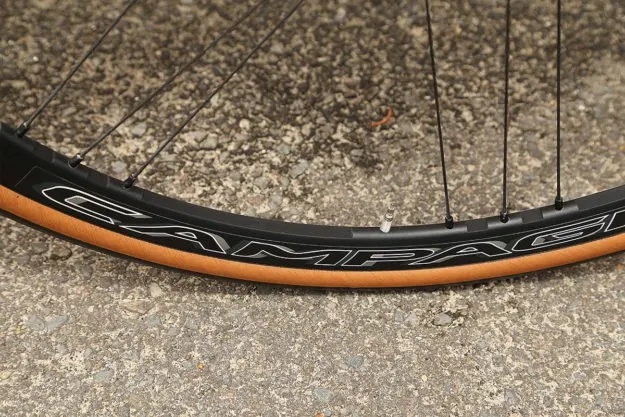
In use, the H11 kit is impeccable. Like any disc brake setup, a spot of bedding in of the pads and discs helps to let everything get to know each other and maximises the performance and power of the system, not to mention that doing so helps to avoid the brakes squealing.
Get that right and you should see no reason to do anything to the setup beyond a spot of brushing off brake dust until the pads next need changing. The available stopping power is more than you will ever need; and the modulation and control are fantastic — the latter two of which really are the reasons for moving to disc in the first place.
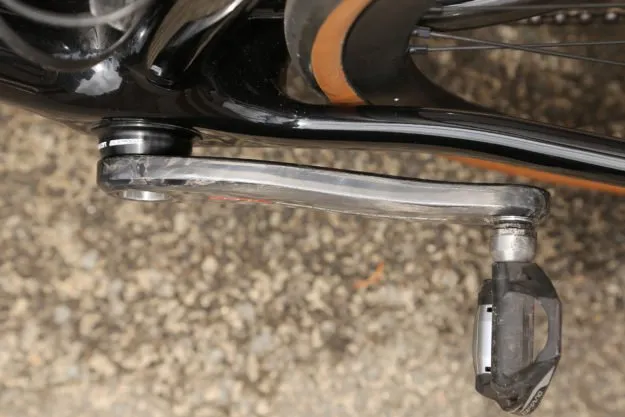
What’s more, if the modulation isn’t to your liking out of the box it can be adjusted, meaning you are able to change it from a firm, aggressive bite to a softer and more progressive feel.
This is a unique option to Campagnolo — the Shimano and SRAM setups allow for pad contact and lever reach to be adjusted, but not modulation. As it was, I felt no need to play with this as the modulation felt exactly how I like it after the initial setup.
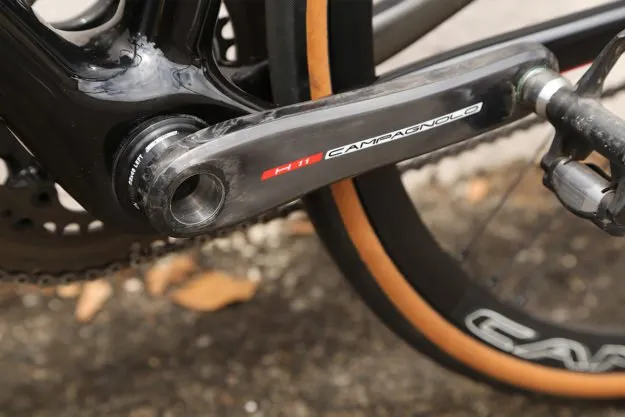
We were lucky enough to be sent a set of Campagnolo’s Zonda wheels along with the H11 parts. These were the first of the new Campagnolo disc wheels to be launched; and sit at the more budget end of the Campagnolo wheel spectrum with an RRP of $600 (AUD at the time of writing).
That’s not to say they perform like a budget wheelset, though — they’re very smooth rolling and, aside from the slightly heavier weight (published as 1675g), would easily out-perform some much more expensive alternatives.
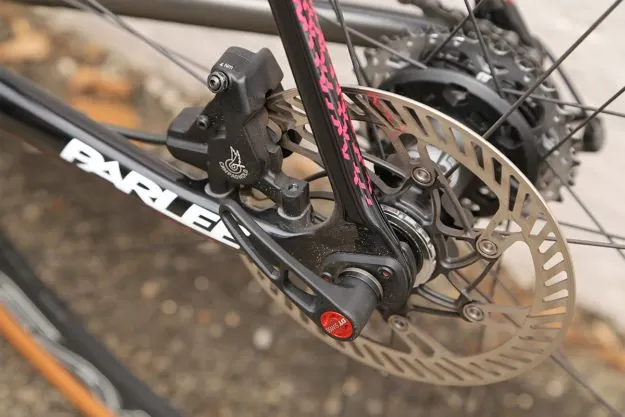
They’re bang up-to-date spec-wise too, being setup for 12mm thru-axles and of an internal width of 17mm and 22mm externally, making them better suited to running wider tyres. We ran them with 28mm Clement LCVs for that classic tanwall aesthetic; and this made for a really smooth rolling combination.
This feels like quite a light review for a product which has evoked so much emotion, interest and debate in the industry. However, beyond the fact that it works exactly as intended and has been executed in the kind of manner that has come to be expected of Campagnolo, there really isn’t much more to say.
On the basis that they all work and are all very good, comparison to disc groupsets from the other brands will come down to personal preference — be that with regard to lever ergonomics, whether you require the option to switch between disc rotor sizes, or simply which you prefer the look of.
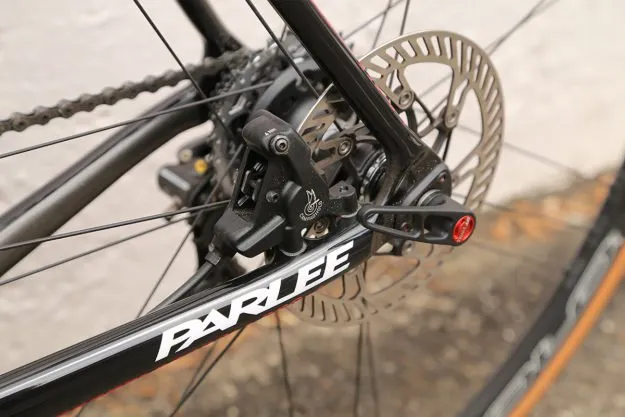
Ultimately Campagnolo have entered the road disc market with a setup that will never leave you wanting more and which carries all of the class of their adored rim brake groups. If your hands are programmed for Campagnolo shifting and you want a disc brake groupset you will not be disappointed.
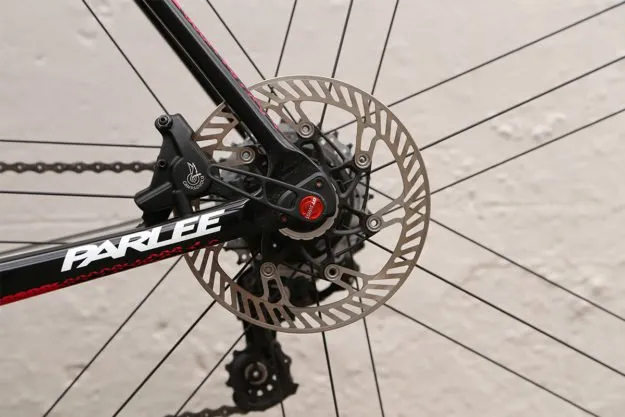
Rich
In my circa 35 years of riding I have only ever taken my bikes to a shop when I needed to ask nicely to borrow a tool that I didn’t have - usually in return for a quantity of beers proportionate to the number of staff who worked there, the value of the tool in question and/or the amount of workstand time I wasted.
The number of bikes I have owned is a number that I don’t want my wife to know. Years in the bicycle industry in various guises interspersed a corporate career, ultimately leading to becoming founder, owner, CEO, spanner monkey and Tea Boy of my own home-based workshop, which is The Best Job in the World; and is where I currently practice a solid amount of Yelling At Bikes.